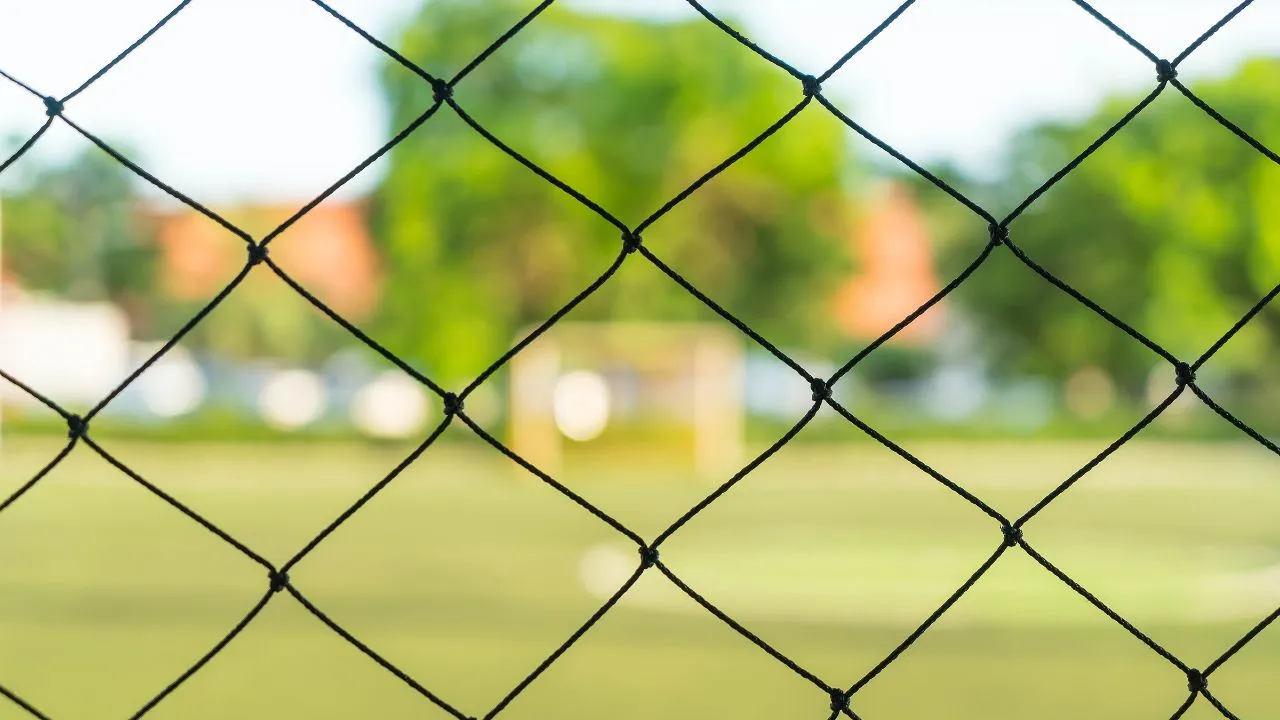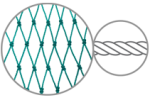
Get the Best Out of Your Practice Sessions with Our Cricket Net
The Perfect Cricket Nets for Your Home or Club Practice Sessions
Welcome to our selection of high-quality cricket nets designed to help you get the most out of your practice sessions. Our cricket nets are perfect for use in your backyard, at the club, or on the field, and are ideal for players of all skill levels. Whether you are looking to perfect your batting technique or hone your fielding skills, our cricket practice nets will provide you with an unmatched training experience.
At our company, we believe that everyone should have access to top-quality cricket nets without breaking the bank. That’s why we offer a range of nets at affordable prices, from basic nets for beginners to professional-grade nets for serious players. Whether you are a seasoned cricketer or just starting out, our cricket nets are an essential investment for your training needs.

TWISTED NETS

BRAIDED NETS
CRICKET NET FEATURES
Thermo-Stabilized for excellent dimensional uniformity and mesh stability.

HM
(Half Mesh)

KKFM
(Knot-knot Full Mesh)

IKFM
(Inside knot Full Mesh)
BEST FOR THE INDUSTRY

TWISTED NETS

BRAIDED NETS
PRODUCT HIGHLIGHTS

High
Breaking Strength

THERMO-STABILIZING
PROCESS

THERMO-STABILIZING
PROCESS
CERTIFICATIONS




CRICKET NETS
Features to Look for in a High-Quality Cricket Net
- High-density polyethylene (HDPE) netting: This material is known for its strength, durability, and resistance to harsh weather conditions.
- Steel frame: A sturdy steel frame provides support for the net and ensures that it remains in place during use.
- Various sizes and shapes: Cricket nets come in different sizes and shapes, allowing players to choose a net that best suits their training needs.
- Easy to assemble: Many cricket nets are designed to be easy to assemble and take down, making them ideal for use at home, at the club, or on the field.
- UV protection: Some cricket nets feature UV protection to prevent damage and fading caused by exposure to sunlight.
- Target zones: Some cricket nets include target zones that help players focus on specific areas of their game, such as batting, fielding, or bowling.
- Portability: Some cricket nets are designed to be portable, allowing players to easily transport them from one location to another.
- Affordable pricing: High-quality cricket nets are available at a range of prices, making them accessible to players of all skill levels and budgets.
When choosing a cricket net, it’s important to consider your specific needs and budget. Look for a net that is durable, easy to use, and provides features that will help you improve your cricket skills.

TWISTED NETS
| TWIN SIZE | Mesh Size (Sq. Mesh) | Length | Width | |
| (mm) | (mm) | inch | Meters | Meters |
| 1.5 | 1.5 | 1-3/4 | 100 | 15 |
| 1.5 | 1.5 | 1-3/4 | 100 | 15 |
| 2 | 1.5 | 1-3/4 | 100 | 15 |
| 2 | 1.5 | 1-3/4 | 100 | 15 |
BRAIDED NETS
| 2 | 30 | 100 | 15 | |
| 2 | 1.5 | 1-3/4 | 100 | 10 |
Note: Tolerance: +/-5%
Available in two varieties
The Importance of Choosing the Right Cricket Net
Cricket nets are an essential part of any cricket player’s training routine, allowing players to improve their skills in batting, fielding, and bowling. When choosing a cricket net, it’s important to consider the type of netting material and mesh size that best suits your training needs. Two common types of cricket netting materials are twisted nets and braided nets.
Twisted Nets: Material and Mesh Size
Twisted nets are made from high-density polyethylene (HDPE) material that is twisted together to form a strong, durable net. The twin size twisted nets have a mesh size of either 1.5mm or 2mm, and are available in lengths of 15 meters and widths of 100 inches. These nets are suitable for general practice and are ideal for players of all skill levels.
Exploring Braided Nets: Material and Mesh Size
Braided nets, on the other hand, are made from individual strands of HDPE material that are braided together to form a dense, sturdy net. Braided nets have a mesh size of 2mm and are available in lengths of 15 meters and widths of either 10 or 100 inches. These nets are designed for professional-level practice and are known for their superior strength and durability.
How to Select a Cricket Net that Meets Your Training Goals
When selecting the mesh size of your cricket net, it’s important to consider your training goals. A smaller mesh size, such as 1.5mm, is ideal for improving your accuracy and precision in batting, fielding, and bowling. A larger mesh size, such as 2mm, is better suited for practicing your power hitting and other advanced skills. In summary, twisted nets and braided nets are two popular types of cricket netting materials. Twisted nets are suitable for general practice and have a mesh size of 1.5mm or 2mm, while braided nets are designed for professional-level practice and have a mesh size of 2mm. When choosing a cricket net, it’s important to consider the mesh size that best suits your training goals and to select a net that is made from high-quality, durable material.
Frequently Asked Questions:
The size of a cricket net can vary depending on the manufacturer and specific product. However, a standard size for a cricket net is around 20 feet (6 meters) in length, 10 feet (3 meters) in width, and 10 feet (3 meters) in height. Some cricket nets may be smaller or larger, depending on the intended use and training needs.
The thickness of a cricket net can vary depending on the specific product and manufacturer. However, most high-quality cricket nets are made from high-density polyethylene (HDPE) material, which is known for its strength and durability. The thickness of the netting material is usually measured in terms of mesh size, which refers to the distance between the individual strands that make up the net. Common mesh sizes for cricket nets range from 1.5mm to 2mm.
Cricket practice nets offer several benefits for players who want to improve their skills:
Improved focus: Cricket practice nets allow players to focus on specific skills, such as batting or bowling, without the distractions of a full game.
Convenience: With a cricket practice net, players can train anytime and anywhere, whether it’s in their backyard, at the park, or at the cricket club.
Safety: Cricket practice nets provide a safe environment for players to practice without worrying about injuring other players or damaging property.
Repetition: Practice nets allow players to repeat the same skills over and over, helping to build muscle memory and improve technique.
Realistic conditions: Some practice nets come with target zones or visual cues, helping players simulate game-like conditions and improve their performance under pressure.
Versatility: Practice nets come in different sizes and shapes, allowing players to practice a wide range of cricket skills.
Cricket nets can be made of different materials, but the most common material is high-density polyethylene (HDPE) netting. This material is known for its strength, durability, and resistance to harsh weather conditions. Some cricket nets also feature steel frames for added support, while others may have target zones to help players focus on specific areas of their game. The specific materials used to make a cricket net can vary depending on the manufacturer and the intended use of the net.






